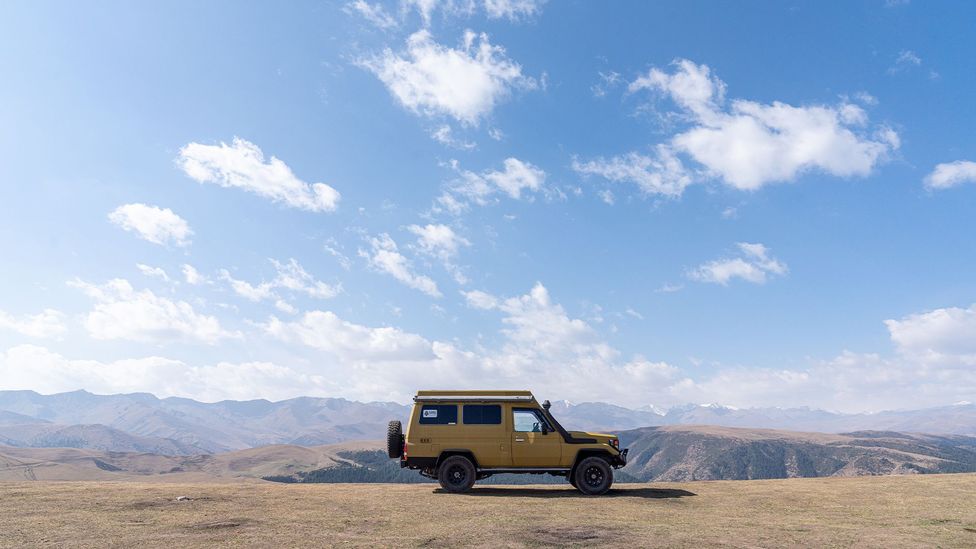Sipping black tea with milk from a blue-and-white piala ceramic bowl, I felt like a child again. We'd arrived at Saty, a small village in southern Kazakhstan, after driving all day from Almaty through an otherworldly terrain of wide steppe grasslands, narrow gorges and snow-capped mountains. I was born in Almaty, Kazakhstan's former capital and its biggest city. Although I moved to Estonia when I was three years old, I returned to Kazakhstan every summer to visit my grandmother. Yet, until now, I had barely explored the rest of the country outside the city limits.
The sky-scraping peaks of the Tian Shan mountain range form a natural barrier between Kazakhstan's south-eastern corner and neighbouring Kyrgyzstan and China. It's here, in the Almaty region, where the country's most spectacular landscapes lie. After years abroad, I returned to fulfil a dream: getting to see this vast nation beyond my birth city.
I'm not the only traveller who hasn't seen much of Kazakhstan. Despite being 40 times larger than its Caspian neighbour Georgia, only one-ninth as many foreign visitors came to Kazakhstan as Georgia in 2022 – and most stay in the nation's two largest cities: Almaty and Astana. But those who venture beyond the cities get to experience a rugged land, where horses and camels graze on the endless steppes and the Indigenous Kazakh culture comes alive.
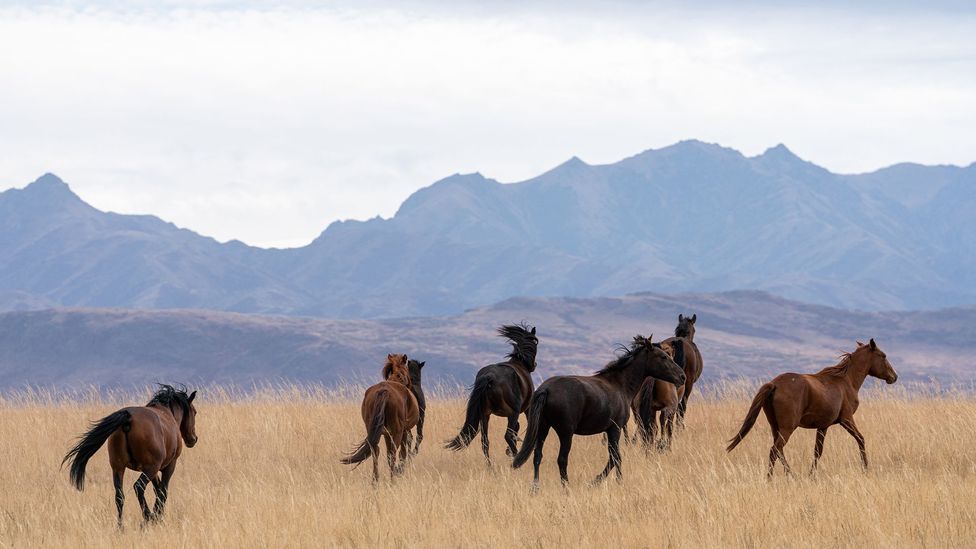
Kazakhstan's vast, rugged interior is home to its most stunning scenery and nomadic roots (Credit: Yulia Denisyuk)
Kazakhstan has a layered past. For centuries, nomadic Turkic tribes and Silk Road caravans crossed these steppes. In the 15th Century, a nomadic state formed that lasted for roughly 400 years until the Russian Empire took over. But this history is nearly invisible in Almaty, a former Russian frontier military outpost that birthed the modern city in 1854.
"A lot of Kazakh culture was forgotten in the Soviet era," said Almaty-based Kazakh filmmaker Timur Mugynov. "But today's youth want to learn about their roots."
This is what I wanted to see. As a child, when I visited my grandmother, I loved exploring the mountainous apple and apricot gardens on the outskirts of Almaty and climbing the Ile-Alatau, Almaty's imposing mountain range. Some of my favourite memories are of riding in the backseat of my grandfather's old Soviet car to go to our dacha country home. But as I grew up and moved away, I started learning about Kazakh identity, history and its Silk Road legacy from afar, and realised that there's much more to the nation than just Almaty.
In the last few years, many Kazakhs have been increasingly discovering the nation's diverse rural landscapes. Since the pandemic, the country has improved facilities at national parks and opened several high-profile eco hotels. With this road trip, I hoped to see the remote Kazakh countryside before others started descending.
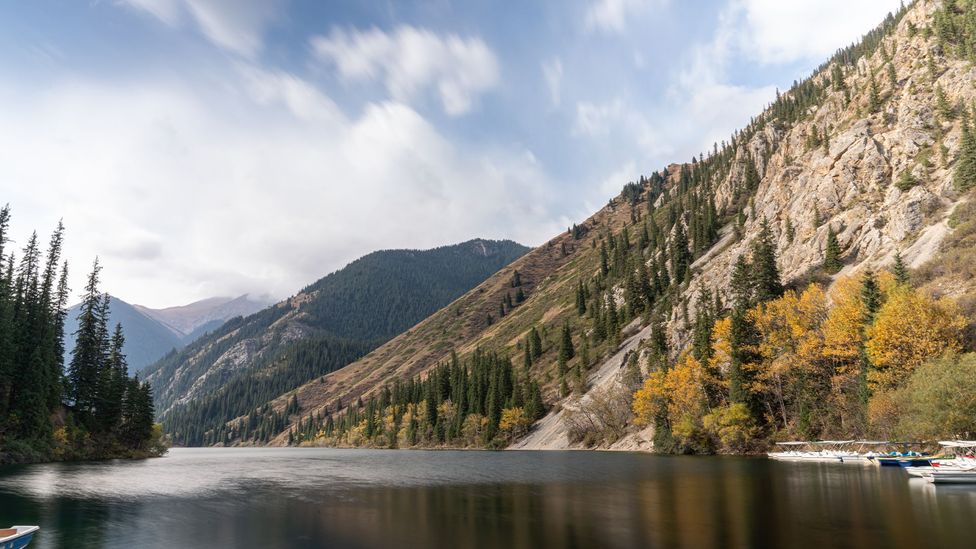
The Almaty region is home to endless steppes, rugged mountains and alpine lakes (Credit: Yulia Denisyuk)
It turns out, I didn't have to go far. Despite Kazakhstan being the world's ninth-largest country (and the largest landlocked country), its small, south-eastern Almaty region is something of a national highlight reel.
"Almaty region is unique," said Konstantin Ludanov, an Almaty-based guide with Photosafari Travel who drove the all-terrain vehicle I'd hired for my trip. "It is the only place in Kazakhstan where you can drive for a few hours and see desert dunes, Alpine lakes, mountain ridges and steppes all without leaving the region."
We set off on Almaty's sleepy streets at 05:00 and were soon driving along the Kuljin, a 19th-Century road that became a concrete highway (A-351) during Soviet rule, despite keeping its colloquial name. The Kuljin stretched eastward to the Chinese border with the Tian Shan mountains appearing in the distance. Passing townships on the outskirts of Almaty, we veered south to begin our eventual ascent to Asy Plateau, a 60km stretch of breathtaking alpine meadow at a nose-bleeding altitude of 3,200m. This ancient landscape is an example of Turkic transhumance, a practice still alive in rural Kazakhstan, where shepherds set up camp with their herds on high-altitude pastures in the summer and move down the mountains at the season's turn.
Here, eras change with each kilometre. At the western end of the plateau, Kazakhstan's largest astronomical observatory, Assy-Turgen, has been in operation since 1981. Equipped with one of the world's largest telescopes, it recently made a groundbreaking discovery by observing one of the most powerful explosions in the Universe – an event that occurred five billion light years away. The observatory is closed to visitors, but I asked Ludanov to stop nearby so I could absorb the ravines, rolling hills and mountainous peaks stretching towards the skies.
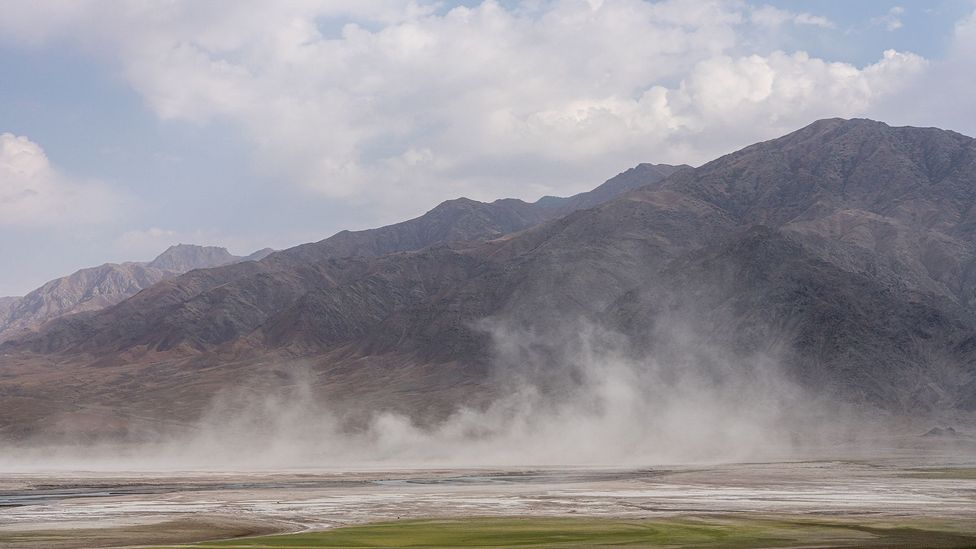
The Asy Plateau is a 60km stretch of otherworldly peaks and meadows 3,200m above sea level (Credit: Yulia Denisyuk)
Further east on the plateau, I spotted mysterious burial mounds called kurgans along the banks of the Asy River. These are remains of the Saka culture, a nomadic warrior people that inhabited this area in the Iron Age. The medieval Silk Road caravans chose this route, too, on their way to Kyrgyzstan and China as part of the Unesco-inscribed Chang'an-Tianshan Corridor. Charting the same path as generations before me, I felt a missing piece of my birthplace was starting to take shape.
By nightfall, we'd reached Saty, where Shakira Dosumova, owner-operator of the Algados guesthouse was busy setting dastarkhan, a festive table spread prepared by Kazakh people when guests arrive. "I love meeting travellers from all over the world and I want to feed them well," she said. "We often encounter a language barrier, but when what you do comes from the heart, words aren't needed."
Even today, Kazakh culture is guided by a centuries-old tribal system of zhuzes: the three large regional clans whose members are said to share certain socio-political leanings and even personality traits. "Almaty region traditionally belonged to the Upper Zhuz," said Mugynov. "The people here are extremely hospitable and they will stop at nothing to make their guests feel like royalty."
The generous spread and welcome took me back. When I visited my grandmother, long tables would be thrown together for the occasion, our extended relatives gathered, singing folk songs and eating dishes like kazy horsemeat sausage and honeyed chak-chak dessert. Celebrations went on for hours, often lasting well into the night. When Dosumova insisted I eat a second bowl of shurpa (a rich lamb and potato soup), it reminded me that in Kazakhstan, feeding people is how we show our love.
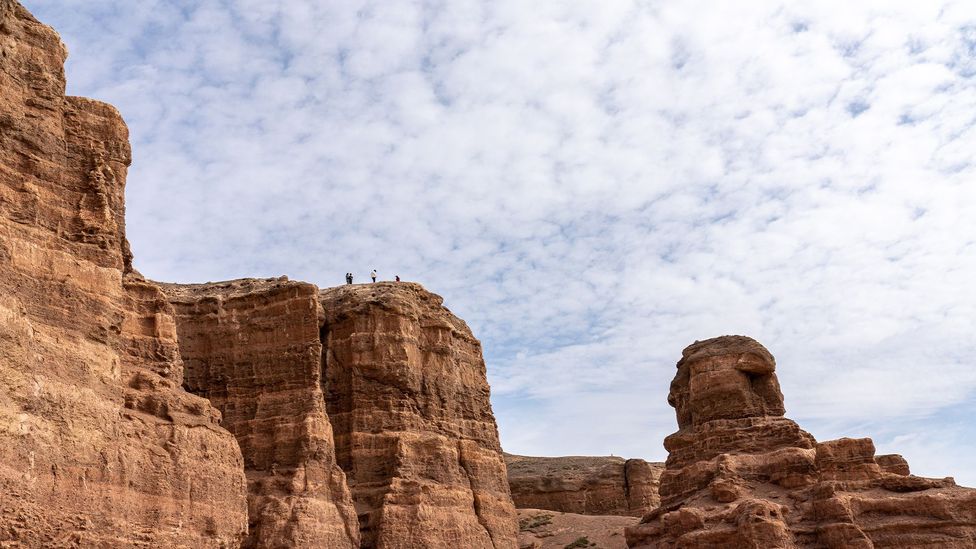
Charyn National Park is often compared to the US' Grand Canyon (Credit: Yulia Denisyuk)
As we made our way further east to Charyn National Park, I noticed strange bunker-like structures facing China on the roadside hills. "These structures, called DOTs, or long-term firing points, were built by the Soviets in response to the little-known 1969 Sino-Soviet border conflict," said Ludanov. He explained that special permits were required to access this border area during Soviet rule, and now some travellers journey here just to visit these curious relics from Kazakhstan's past.
Only three hours from Almaty, the network of canyons inside Charyn National Park is is often compared to the US' Grand Canyon. Cut 300m into the earth by the Charyn River, the Charyn Canyon's 12-million-year old sediments form a parched, pinnacled landscape of red, yellow and white rock that constantly shifts due to wind and erosion. Dwellings, burial structures and tools from the Stone and Iron Age have all been found here. Awestruck, I descended into the Valley of Castles, a 2.5km gorge where many of the Valley's whimsical sedimentary rock formations resemble faces, and I wondered if ancient Kazakhs may have walked this path, too.
Further downstream, more threads of Kazakhstan's story are hidden in plain sight: the endemic Sogdian ash trees inside the Charyn Canyon are named after the Sogdians, the long-forgotten Silk Road merchants who facilitated the exchange of knowledge and beliefs across the Silk Road.
As we turned west back towards Almaty, we set our sights on Altyn-Emel, one of Kazakhstan's largest national parks with deserts, mountains and steppes within its borders. The park's impressive biodiversity has made it a Unesco Biosphere Reserve, and its Martian-like red-and-white Aktau mountains date back 400 million years. Just as Kazakhstan was once a melting pot of peoples on the Silk Road, Altyn-Emel today is the meeting place for rare and endangered species – among them Turkmenian kulan donkeys, Bukhara deer, Persian gazelle and the Siberian salamander – seeking refuge in the reserve.
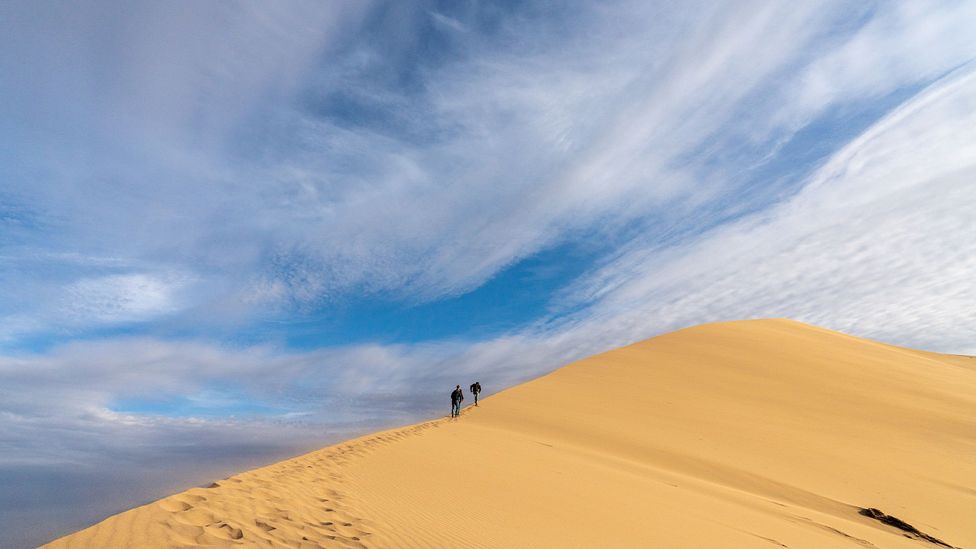
When the wind is right, Kazakhstan's "Singing Dunes" produce a low-pitched sound similar to nomadic throat-singing (Credit: Yulia Denisyuk)
Altyn-Emel's premier treasure is Aigaikum, (the "Singing Dunes"), a 240-hectare double sand dune stretching more than 3km. Around 200,00 years ago, an earthquake split the surrounding mountains apart and a strong wind corridor formed, carrying grains of sand from the foot of the mountains into the eventual dunes. I wanted to hear Aigaikum's elusive song: at certain conditions, the dune produces a loud, low-pitched vibration sound akin to the nomadic throat-singing tradition that's being repopularised by young Kazakh folk groups like Turan.
"I came to Altyn-Emel originally to help my parents," said Saltanat Bayadilova, owner of the nearby Aigai Kum guesthouse, as she poured me a cup of fresh-from-the-cow raw milk, a drink that's still commonly found in rural areas. "I never left. Our nature is so special, and I love the fact that I live here."
Setting off on the A-3 road that would eventually bring us back to Almaty, I was quieter than usual. As petrol stations, fast food restaurants and the tell-tale signs of urbanity reappeared, I thought back to what Mugynov told me: "Our culture is all about the land. It's important for us to see what our land looks like, to develop a connection."
"We were nomads," Mugynov added. "We were not living in the cities, we were traversing this land. This is who we are."
The Open Road is a celebration of the world's most remarkable highways and byways, and a reminder that some of the greatest travel adventures happen via wheels.
---
Join more than three million BBC Travel fans by liking us on Facebook, or follow us on Twitter and Instagram.
If you liked this story, sign up for the weekly bbc.com features newsletter called "The Essential List". A handpicked selection of stories from BBC Future, Culture, Worklife and Travel, delivered to your inbox every Friday.
